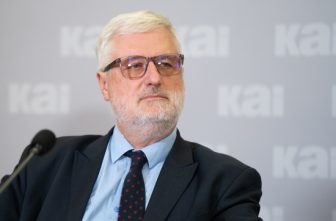
Recently I heard a story about the parent who came home from work and discovered that the three children had taken out the trash, cleaned the kitchen and tidied their bedrooms. The parent was impressed and asked, “What made you do all this wonderful housework?” The children replied, “The WiFi is down.”
A friend of mine once commented that she knows more about her granddaughter than she ever knew about her daughter. I replied, “Yes, young people today talk more easily about so many things.” My friend said simply, “Well, I don’t know about that. I just go to my granddaughter’s Facebook page and her entire life story is all there!”
There was a time when a summer bonfire was an opportunity to tell stories. This summer I was at a family’s outdoor fire and we shared YouTube videos.
When I was a young pastor, oh so many years ago, if the parish needed to reschedule a meeting, the parish secretary spent most of the day on the phone calling all the participants to set a new date. I remember the scramble in the parish office to put together the parish council packets (agenda, minutes, financial reports and other important documents) and get them into the mail at least a week before the meeting. I remember the handwritten phone messages on a pre-printed form titled, “While You Were Out.”
Emails and texts have replaced voicemails. It is possible, though still not a good idea, for agendas, minutes and attachments to be sent out the day of any particular meeting. Rescheduling is as simple as sending an email or one of those e-calendar alerts. So much has changed in how we communicate with one another, even as a Church. In a world of expeditious and efficient electronic messages, the convenience of instant communications is at the expense of meeting face to face.
In the Church, electronic communications would be fine if, in the living out of our faith, all we needed was a way to exchange ideas. Yet we not only follow a set of spiritual ideals and central teachings, we are also in a relationship with a real person — Jesus Christ. The movement of the Holy Spirit transforms people into one body, not into an anthology of great thoughts.
In our conversations with one another, there is a noticeable difference when I can see the person’s face. I notice the raised eyebrow or the silent nod of the head. But when I’m reading an email, sometimes I have to try to read in-between the sentences to really know what is being communicated. Let’s face it. We get a lot more out of face-to-face conversations than from any email or text — even if the text is loaded with emoticons.
St. Thomas Aquinas wrote about the “beatific vision” — the experience of coming into heaven and meeting God face to face. If the end of our earthly pilgrimage is the opportunity to behold with perfect love the very face of God, then shouldn’t we be practicing for this face time in this life? Masses, confessions, times in adoration, daily prayer and meditations with the Scriptures are all examples of face time with God. Yet we know from the two great commandments of Jesus that we are to love God and love our neighbors as ourselves. We are to build our relationships with one another just as we build our relationship with our Lord Jesus Christ — through the real presence of each other’s company. If our eyes are truly windows into our souls, then what do I “see” in an emotionally charged icon?
There are times when in the gathering of family and friends, more is communicated than could ever be written in an email, let alone a text. There are times in the life of the Church when the meeting’s agenda is secondary to the gathering of disciples. During these times, it is important to put away the phones, laptops and electronic pads.
If anyone wonders why, just say, “I’m practicing for the beatific vision.”




